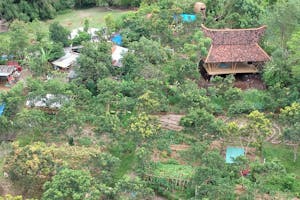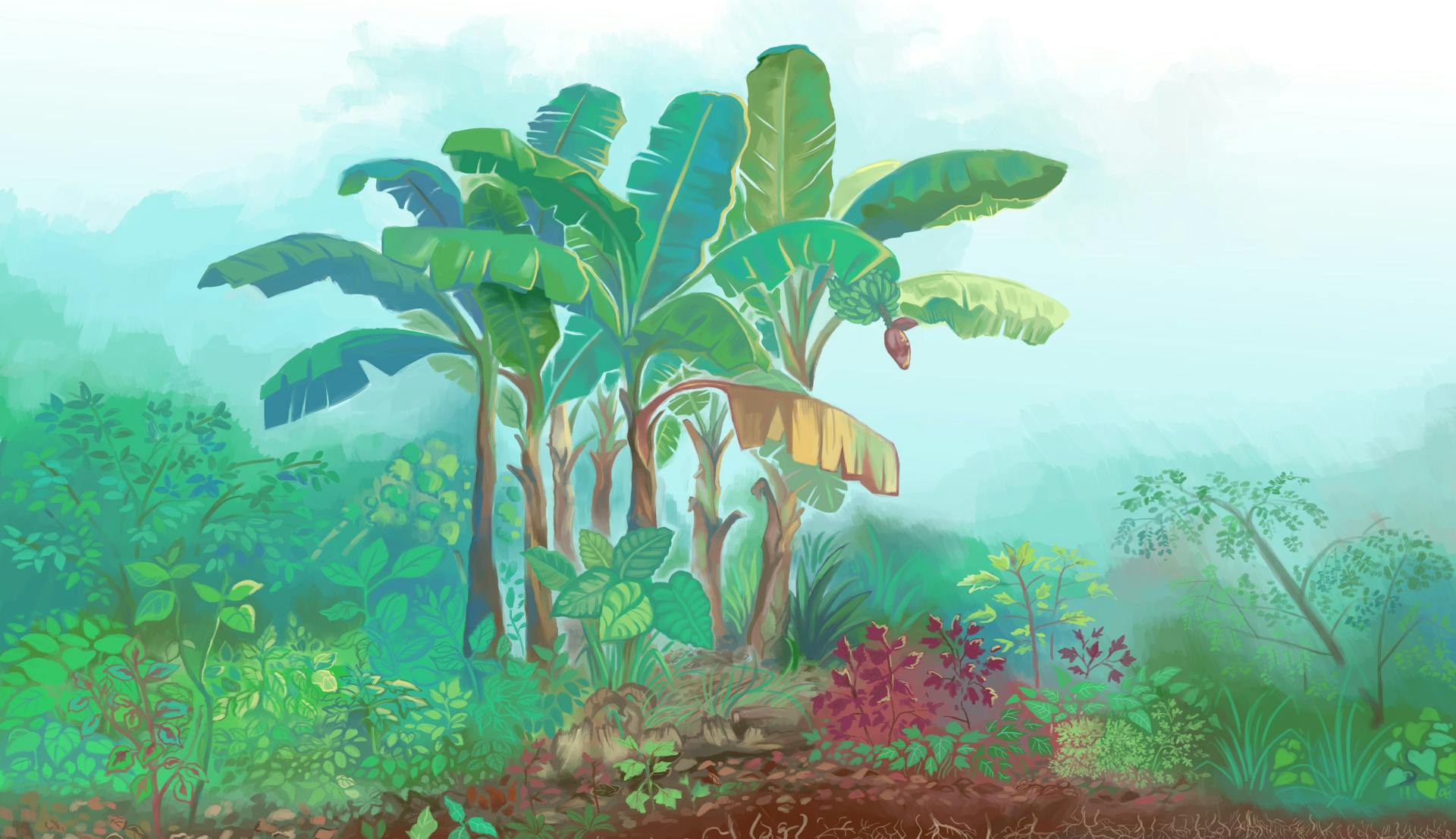
My journey of starting a guerrilla garden - II
This is Part II of a series of posts detailing a journey and an experimental process of seeding a guerrilla garden and letting it take shape in our midst. How will this pan out under watchful eyes? Will this be a fruitful pursuit? Follow me as I share my journey and stories from the field where I convert a plot of underutilized green space into an edible garden! (Read Part I here).
It was surprising how quickly my fears of getting caught and shamed faded. The small wins coming from a garden that is thriving – not yet massacred – had given me a healthy dose of confidence. I was perhaps running off being a little too overconfident, probably even a tad cocky! My hunch of planting seedlings directly into the ground amongst the grasses and supposedly ‘nutrient robbing’ weeds – what seemed counterintuitive to conventional gardening theories – was the best decision I had made so far. The inspiration came from Masanobu Fukuoka’s book ‘The One-straw Revolution’. An advocate of ‘do-nothing’ farming, Fukuoka had allowed weeds to grow without applying chemical fertilizers in his rice fields. He was able to produce rice that was tastier and more plump than his neighbours’ who had used fertilizers and constantly weeded. Though my garden was still in its early days and possibly too early to arrive at a verdict on the success of this laissez-faire gardening approach, the pumpkin seedlings that were growing so fast day by day tells me that I was on the right track.
Riding on adrenaline, there came a point when I felt like it was time to ‘go big or go home.’ It was time to up my game. The more I grew, the more people I could share the produce with. Half of the entire 200m² grass patch had already been apportioned into 10 smaller rectangular plots – each demarcated by bamboo sticks and green wires. Each plot had a mix of a tree, a climbing plant, and a ground cover. This symbiotic planting method optimised every bit of horizontal and vertical space. It was popularised by a highly productive planting style by the ancient Aztecs called the ‘three sisters’ where beans used corn stalks as climbing support, and pumpkins grew sprawled on the ground. In my case, the climbing support comprised mainly of papaya trees. The climbers included passionfruit and butterfly blue pea plants, the ground covers included sweet potato leaves and pumpkin. But I had a little challenge with maintaining the ideal ratio of trees to climbers to ground cover per plot. Most of the inputs like seeds and seedlings were taken from fruits and vegetables used in my family’s meals. There were often explosions of seeds especially for pumpkin and papayas, and simply not enough planting space at this point. I had an excess of freshly planted cantaloupes seedlings, this meant I needed to create trellis for climbing support should I wish to plant them. I made a quick run to the neighbourhood hardware shop and came back with a handful of bamboo sticks typically used for hanging clothes, each cut to about 2m in height. Mallet in hand, I started hammering these sticks into the ground.
The loose, fluffy soil that covered the top few inches made the task seem deceptively easy. Beyond the first couple of inches, the ground quickly transformed into rock hard clay. It was like trying to hammer a piece of wood into a concrete wall, and soon I started breaking out into a sweat in the afternoon sun. Eventually, after what felt like eternity, all the 4 corners of the plots were demarcated, each with sticks anchored in. The string work that came after was much easier – I connected each of the 4 poles of the plots by string, and connected each of the dozen plants to the top of the string. This task was simple and I sped through it…everything was going to plan.
Trellis I built for the plots with some bamboo poles and strings. More field notes here.
“Hi. Is this your project?” Someone interrupted me abruptly as I was finishing up my last string. I turned around and behind me two ladies stood tall. The lady in front lifted her tag at me from her lanyard looking like some cop.
“We are from the Town Council,” she said. At that moment I felt like a criminal waiting to be handcuffed and escorted away.
“Uhhhhh…” I could feel my heart beating faster. “Yes….?” I didn’t know what else to say.
“Do you know you’re not supposed to plant anything into the ground? It’s against the law.”
“Ohhhhhh. Sorry. I didn’t know.” I totally did. “But…can I explain why I did it? Can I explain what this project is about?” I was desperate, I had so much to say. I didn’t want to just leave the impression that I was this random criminal who goes around breaking the rules. “I wanted to do something during COVID to help with food security…”
“You are still not supposed to plant directly in the ground,” she interjected firmly.
I nodded obediently like a child, recognising my fault. Having run out of ideas. I blurted out, “Can I please appeal? To somebody? Your manager?”
She paused, obviously not expecting that response. With a straight face, she told me who I could write to. I was not expecting that response either; I thought that I had to remove the garden on the spot. I thanked her profusely for giving me a chance. The two ladies walked away, and continued their inspection for other rule breakers in the estate.
The project has already taught me a few things, such as how biodiverse these grass patches actually are. It showed me how fertile the soil is, from the mere growing of grass and weeds all these while. It showed me the potential of growing crops on this underutilised piece of grass.
I just knew that this fate was coming the moment I started making things really obvious with the demarcations. The trellis was way too conspicuous. I should have just laid low, kept the project small and fly stealthily under the radar. My overconfidence had gotten me into trouble.
There was a chance, albeit a really slim one, to preserve the garden. Rules are rules after all. I knew the Town Council had a job to do, and I would have done the same if I were in their shoes.
I was feeling bittersweet about the journey at this point. I felt a bit bitter about it, especially if I had to remove the plants. They had set roots in the ground and were already part of the community of other plants. Very soon, they would be bursting into teen-hood, thriving, filled with life and energy. It would be cruel to take them out right now. On the more optimistic side, I felt like I had tried taking the initiative to start the project. It was a risk that I was glad to have taken. The project has already taught me a few things, such as how biodiverse these grass patches actually are. It showed me how fertile the soil is, from the mere growing of grass and weeds all these while. It showed me the potential of growing crops on this underutilised piece of grass. For now, I have no regrets – after all those years of dreaming, thinking and ideating about starting the garden, I have finally done it. Plus, I had enjoyed the fruits of my labour, though it wasn’t much – I’ve had a couple of stalks of sweet potato leaves, and kang kong. It was good enough to count.
I looked at the garden, and said a little goodbye in my heart. It had been a good run my dear guerrilla garden. May we meet again someday.
About the author
Chris has a deep interest in the entire food chain. He has spent the last decade delving into different aspects from Farm to Table - working as an Urban Farmer, Grocer and Chef, in both urban and rural areas. He is particularly interested in improving the food system by making it more sustainable and equitable. He hopes to share his experiences and thoughts through the Foodscape Collective network and connect with like-minded individuals.
Share this article
Dig Around

Chris - on homecoming; unpacking "sustainability", self-care for farmers and gardeners, and reality checks

Landing on a new Page

A Garden of Soul in the City of Canggu

Seeds and Community Empowerment
Contact Us
Drop us an email or DM on Instagram if you would like to give us feedback, support us in any way, or just to connect!
Foodscape Collective
Foodscape Collective is a ground-up community with a mission to co-create a fair and inclusive circular food system for all. We work together to create communities and livelihoods through collaborative and supportive practices.
Copyright (C) 2025 - Foodscape Pages. All Rights Reserved
